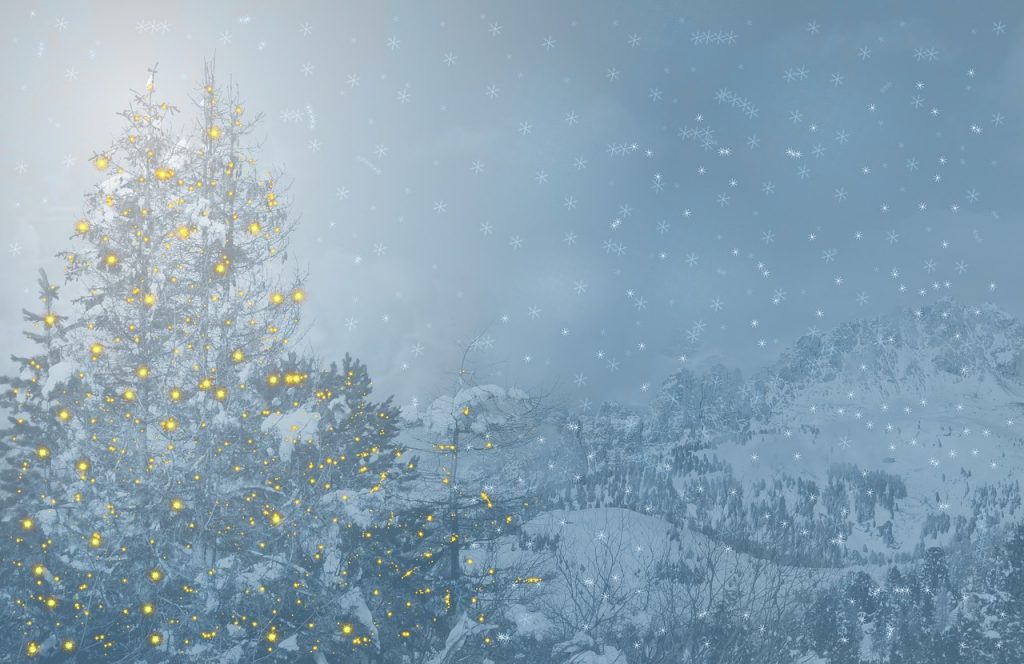An Appalachian Christmas Posted by Gary Locke on Dec 20, 2018 in Culture
One of the most distinctive and interesting cultural regions of the United States is Appalachia. It stretches southwest from the Blue Ridge Mountains of Virginia to the Smoky Mountains which border Tennessee and North Carolina. This snow-capped, evergreen-filled area is the living embodiment of an American Christmas card. Because Appalachia is overwhelmingly Christian in its faith, the residents pour much love and energy into their Christmas traditions.
To be fair, the Appalachian Mountain Range extends from Alabama to Canada, well beyond the culturally unique region of Appalachia. But, because the rugged terrain of Appalachia makes its villages more isolated, the mountain folk of this singular culture stands apart from more diverse communities to the north and south. Their dialect reflects their Scottish heritage, retaining the burr and twang of their roots far greater than any other part of the US. The same can also be said of their music.
Appalachian Christmas songs have an idiosyncratic sound which blends traditional Gaelic instruments with folk and bluegrass styles of playing and singing. You will typically hear a banjo and fiddle alongside guitar and keyboards. The Appalachian dulcimer is a variation of the iconic Irish instrument. It is a guitar-shaped instrument with a flat bottom. It’s laid on its side and the strings are plucked like a harp. The mandolin is more popularly played in Appalachia than anywhere else in the country. You might even hear someone playing the spoons, real metal spoons which are clacked together to provide a percussive beat!
English, Scottish, and Irish hymns and ballads survived the long immigration from the old country to this mountainous enclave in the New World. These songs and stories were adapted by the Appalachian mountain folk who were deeply spiritual in their faith. One of the most enduring is the tale of animals gaining the gift of speech on Christmas Eve. Originating from the Nativity, variations of this story have roots going back to Europe, but nowhere is it the source of more fancy than among the Appalachian people. Children still make their way to barns at night to try to hear cows, horses, and oxen talk amongst themselves.
Another curious tale is reserved for Twelfth Night, January 6. It is said that bees come out of their hibernation after midnight and hum until dawn. Some legends say that, if you listen carefully, they are humming the words of the 100th Psalm.
The region, although rich in natural resources and beauty, has remained among the poorest in the US. For this reason, many of their Christmas traditions revolve around handmade gifts and decorations. Of course, the Christmas tree would be cut locally and brought into the house. Candies made in home kitchens may be placed into muslin packets which are then sewn shut and hung on the tree.
In fact, sewing is an important skill for this season. The stocking which is hung on the fireplace is likely handsewn. On Christmas Eve it will be filled with apples (Johnny Appleseed came from this region), nuts, baked treats, and maybe an orange. During the twelve days of Christmas, which runs from Christmas to January 6th, many families sew pillowcases to be used in the coming year, often with coins sewn into the fabric for luck and prosperity.
If presents aren’t sewn, they likely are knit. Mittens are a very popular (and practical) gift here. Many ornaments are knitted or crocheted for the family tree. These ornaments become treasured heirlooms, and they commonly bear the year they were made somewhere in the stitching.
Many will go ice skating on Christmas Day since ponds in the mountains are likely to be frozen solid. Then families throughout the communities will gather to celebrate together, singing carols and hymns honoring the birth of their savior.

Build vocabulary, practice pronunciation, and more with Transparent Language Online. Available anytime, anywhere, on any device.




